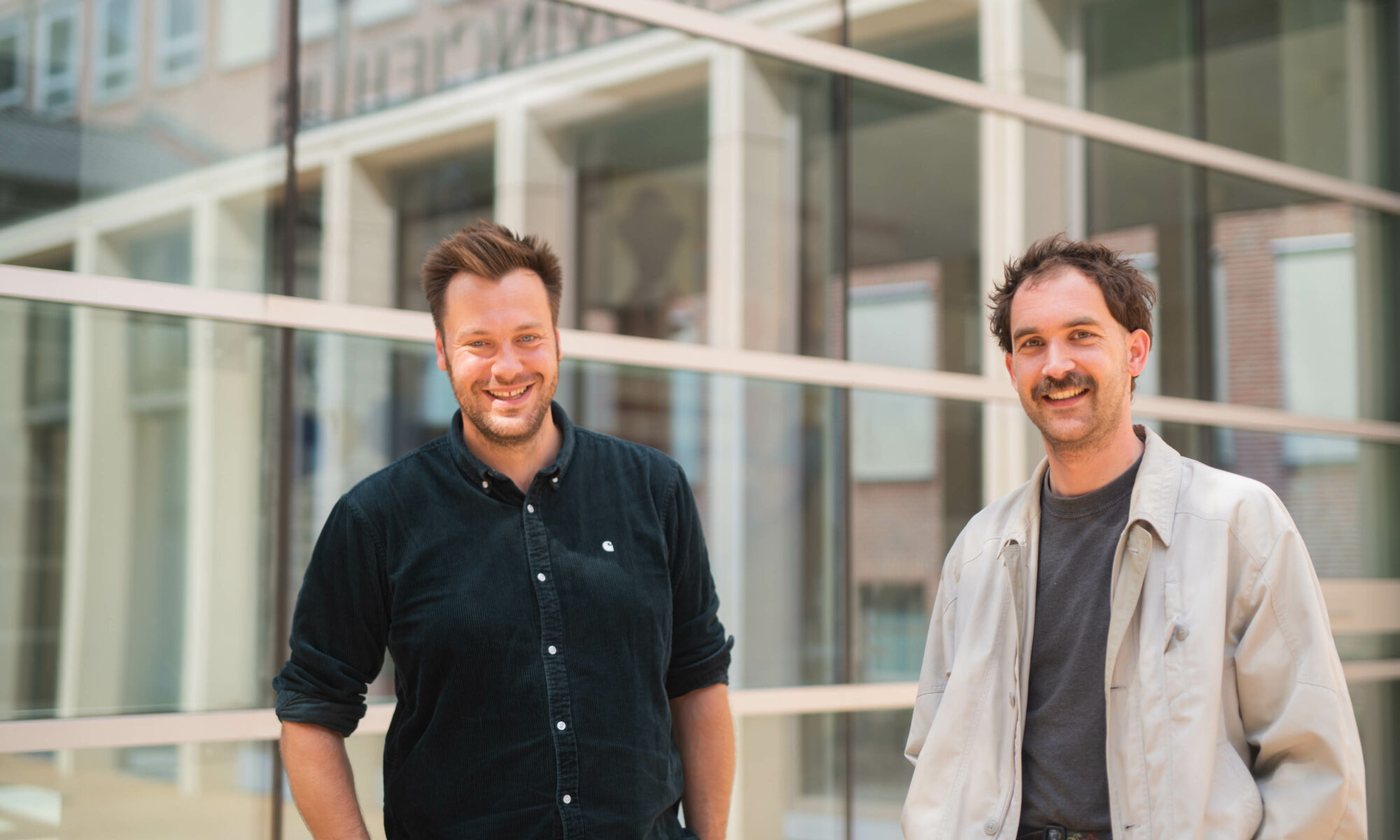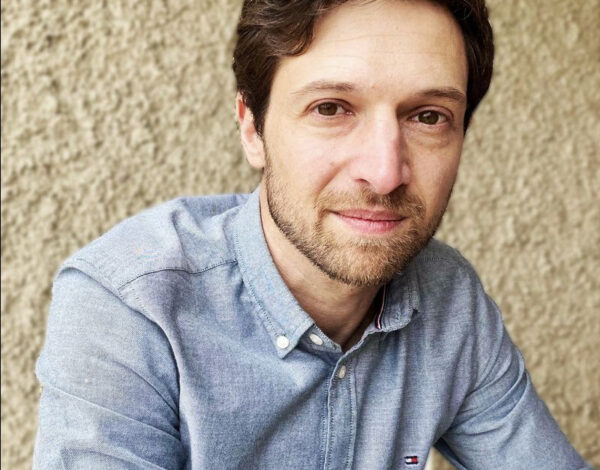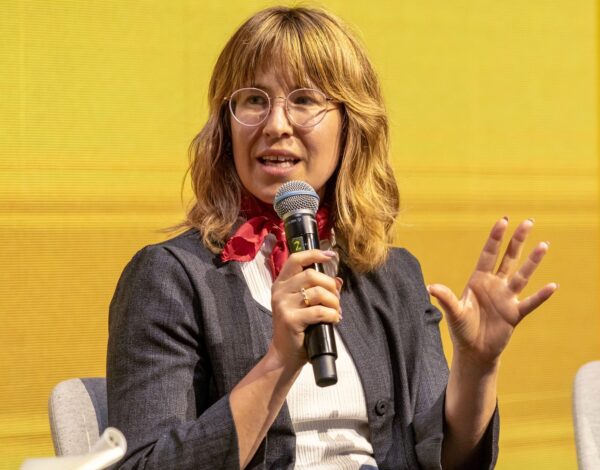Tell us a little bit about yourself?
Jorne: At the municipality of Groningen I learned how small interventions can have a huge impact. I became fascinated by how we can make everyone aware of their environment and how people can impact their city in a positive way. With co-founding Bureau Buitendienst, we researched the use of public space and tried to create better cities by doing participative experiments. We turned the dark corners and alleys of the city center into a golf paradise to make people aware of unused and unsafe spaces in the city, we created a public modular bench with sensors that measured the use of public seating in the city and we monitored the need for more public and accessible toilets. Creating awareness by making the invisible visible.
I took this experience to Amsterdam where I worked on transforming urban areas with Pop-Up City and We The City. Communicating about urban transformation and new urban trends is very important to make everyone part of urban change. We rolled out new concepts to impact neighborhoods in a durable way and wrote trend reports and articles about new urban developments.
Currently I’m working for Roemte, where we finance the repurposing of vacant heritage for social and cultural initiatives and help them with the quality of their concept, business and project management. We are funded by the national government and are involved permanently, with financing we help breeding grounds and other initiatives with permanent housing.
Jorrit:
Urban planning can be regarded as a puzzle where you try to match all the different wishes and needs of all users of public space. By co-founding Bureau Buitendienst, I wanted to contribute to cities for people through participative city-making, research and experimentation, and innovation of the urban planning practice.
I experienced that the municipality tends to struggle to engage residents with the developments in the city, while the insights of residents are very valuable in the whole development process. With Bureau Buitendienst we try to develop creative and innovative ways to engage citizens and take them seriously. We believe in a participatory approach where we work together with citizens in collective city-making.
Why did you become an urban designer?
Jorne: As a young urban planner I have always been fascinated by how people relate to their environment. A lot of people aren’t aware, but we all have a strong relationship with our direct environment and the way this is planned and designed really impacts how we feel and move around. After years of sniffing through atlasses and books about geography, I am happy that I have been able to turn it into my job. I’m happy to incorporate new concepts, communication and vision in area developments, striving for positive change with small and big interventions.
Jorrit:
Public space has such an impact on people’s health and happiness. Being able to plan, design, or alter public space to make it more human-centered is a very powerful tool for change.
What is your favorite city and what can we learn from it?
Jorne: I recently discovered Bruxelles as a city filled with creativeness and energy. Each area is different and there is still a lot of vacancy and possibility. It shows that smoothing out cities, which we tend to do a lot, also has a lot of negative effects on cities. In a city like Amsterdam, you find very little surprise, creativity and diversity anymore. Everything that makes a city unique and interesting is pushed to the fringes.
Jorrit: I really like the harbour cities Hamburg and Rotterdam. The presence of a big harbour can influence the physical and social structure of a city. The international trade and demand for labour often result in a more diverse city with people from different cultural backgrounds. Also, the physical structure changes with big warehouses or industrial complexes adjacent to the harbour area. I feel that this is a perfect combination that results in spaces for creativity and innovation and gives a city a certain uniqueness.
How do you think placemaking can best contribute to urban development?
Jorne: If it is incorporated in the permanent development of the area. Municipalities and project developers should embrace placemaking as a strategy for the long term, this allows placemaking to really impact the development of areas and incorporate citizens, artists and other creatives. If we agree to keep some of the breeding grounds and temporary work spaces we can create beautiful neighborhoods for all!
Jorrit: Totally agree!
We are collaborating in Groningen in your project for Martini Trade Park. How do you see collaborations such as Parkly X Bureau Buitendienst benefiting urban design in general?
Jorne: It is small interventions that can have a big impact. Urban design and especially this Parkly-project sheds a different light on how public seating and greening the city can look like. No boring benches but modular design that can be adjusted to the wishes and needs of the environment. This flexibility results in a design that really fits the wishes of the environment and therefore is a step in the right direction. Because the intervention is light it is a showcase on how this parking lot can be changed into a lively square and we hope it brings a starting point for more change and more Parkly. That’s how we can have a big impact with a small intervention.
Jorrit:
Martini Trade Park office area is centered around a big parking lot. There are a lot of employees and visitors of the companies that are located in the area on a daily basis, but the public space is not designed to stay at all. The area has no benches to sit on, and no greenery, it is just mostly concrete, tarmac, and parked cars.
There have been initiatives to transform the public space for years, but these processes with a lot of stakeholders take a very long time. Parkly is a solution to quickly transform a non-space into a place to stay. Because of Parkly, stakeholders can be engaged in the transition process and we can show that small interventions can make a huge difference. Parkly is therefore a tool for change.
What is the most important topic at the moment for Dutch cities in regarding developing more liveable cities?
Jorne: For me it is inclusive and accessible cities. What we see happening in this neo-liberal housing market is that the money decides. Big anonymous investors and globalization make cities lose their own identity and the people that have been living here for decades get pushed out because housing becomes unaffordable. As a result, the spark and creativity of the original citizens and artists disappears, which smoothes out the city. A conflicting environment to be part of as an urban planner.
Jorrit: Couldn’t agree more. Socially vulnerable neighbourhoods are the ones that could use extra care the most. But development and improvement can easily change the whole dynamics of a place and gradually make it too expensive for citizens to remain in the neighbourhoods they grew up in and would like to stay in. As an urban planner you should be aware of the balance between improvement and gentrification.
Dream big! What does an ideal future city look and feel like?
Jorne: In my ideal city we turn our streets into green lanes with grass and trees, we give public space back to nature and we find creative surprises in buildings and on the corners. The city should become more tactile, getting people back to experiencing the world with their senses and inviting us to go out and discover. Not in commercial shops and bars, but in artist spaces, in parks, streets, squares, empty churches and parking free canals. We push out big investors and give room to cheap rent in all neighborhoods! Cities should be accessible for all!
Jorrit: I think that a lot of people have similar ideas how an ideal city would look like. Research and design lab Space10 explored the concept of an ‘Ideal City’ and distinguished five characteristics: resourceful, accessible, shared, safe, and desirable. One could argue that all these characteristics mean something else to every individual, I can agree with all of them. However, the most important question for me is how we could achieve such an ideal future city.
I think that three developments would have the biggest impact on most cities in order to regain public space and enable all people to be able to participate in public life.
1. Drastically reduce the amount of cars in order to make the city safer and regain a huge amount of public space
2. Improve accessibility by foot and bicycle (and public transport) to enable people to roam the streets and be independent in their mobility choices
3. Make sure that the city is affordable to live and work in for all.


